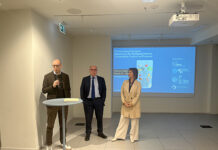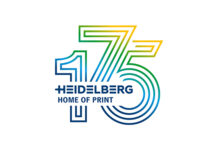The data confirm that paper industry is a leading sector of the Italian circular economy: the goal is to reach 90% for recycling within 3 years
 We interviewed Roberto di Molfetta, deputy director of Comieco, with whom we talked about separate collection during the pandemic, the Chinese market, new paper mills and the reduction of over 50% of the CONAI environmental contribution for paper and cardboard packaging and diversification for polylaminates.
We interviewed Roberto di Molfetta, deputy director of Comieco, with whom we talked about separate collection during the pandemic, the Chinese market, new paper mills and the reduction of over 50% of the CONAI environmental contribution for paper and cardboard packaging and diversification for polylaminates.
Face to face with Roberto di Molfetta, deputy director of Comieco
The differentiated collection during the pandemic, decrease or decrease, and the quality of the same?
“In the period of the pandemic, the separate collection of paper and cardboard has held and has proved to be a well-established habit for citizens, so much so that neither the lockdown nor the resulting changes in consumption, such as e-commerce and food delivery, have stopped it and indeed the increase in the presence of paper and cardboard boxes to manage at home, the result of the increase in online purchases, has represented an additional opportunity for recycling industry.
Going into the specifics of the numbers, according to Comieco’s 26th Annual Report, in 2020 almost 3.5 million tons of paper and cardboard were collected with a slight decrease (equal to 0.6%) compared to the previous year. The per capita average just exceeded 57 kg/inhabitant. Focusing on paper and cardboard packaging, the recycling rate stood at 87.3%: Italy thus reached and exceeded the EU 2030 targets 10 years in advance, confirming itself as one of the strongest recyclers in Europe.
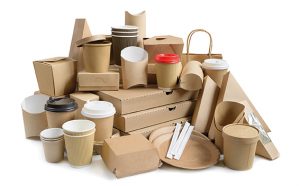
Separate collection is important but it is even more important to do it well. In fact, quality remains one of the objectives on which to concentrate efforts. Also on this front the numbers are comforting but we must aim to do better and better: in 2020, for the second consecutive year, the presence of extraneous fractions in the contributions of citizens is below 3%, falling within the parameters of I quality range. An excellent result which, however, hides different trends within the 3 macro-areas of the country: if the Northern regions are well within the threshold of the first quality range, those of the Center and the South still record performances that are not completely satisfactory from this point of view, so much so that in order to re-enter the first range, affiliated companies must activate additional processes”.
Have new paper mills been opened in Italy recently?
“Between the end of 2018 and 2020 three new paper mills came into operation: one refers to the Burgo Group and is located in Avezzano; another (in Verzuolo), also reactivated by the Burgo Group, was recently acquired by Smurfit Kappa; finally, the new paper mill headed by the Pro-gest Group is active in Mantua”.
How has been overcome the closure of the Chinese market in recent times?
“Surely, the creation of three new paper mills has helped to overcome the situation of excess supply, giving an outlet to wastepaper and creating a rebalancing of internal consumption, and reduced the import of raw material in reels.
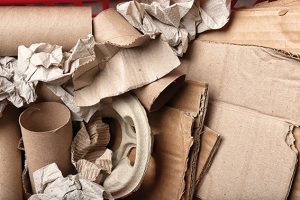
At the same time, the decline in wastepaper prices in 2019, largely attributable to the squeeze on imports from China, pushed many municipalities that managed their collection on the market to re-enter the agreement relying on the guarantee of collection by the Consortium and also in 2020 the trend continued. If in 2019, Comieco took over the recycling of over 2 million tons (58% of the total municipal separate waste collection), in 2020 the volumes under the agreement increased by over 400 thousand tons, reaching over 2.4 millions of tons of paper and cardboard (almost 70% of the total municipal collection). This confirms how the consortium system operates in a subsidiary manner to the market, guaranteeing municipalities the gathering of collections, throughout the national territory, even when the market is not very profitable. The impact of the new volumes translates into increasing economic payments towards the territory: 150 million euros paid to the affiliates in 2020 alone, almost 2 billion euros overall from 1998 to today”.
The reason and the goal of diversification for composite packaging?

“Starting from January 1, 2022, contribution diversification will be introduced for paper-based polylaminates other than those for liquids, in order to bring out the environmental costs of recycling and direct companies towards increasingly recyclable packaging. The new rates provide for a subdivision into four groups based on the composition of the packaging (A, B, C and D). Composite packaging that will fall into groups A and B, with a paper component greater than or equal to 90 and 80% respectively, will pay the paper CAC (from 1 July 2021 reduced to 25 EUR/ton) and no additional contribution will be applied to them. Packaging belonging to group C, which qualifies packaging in which the paper component is greater than or equal to 60% and less than 80%, will pay an extra-CAC of 110 EUR/ton from 1 January 2022. Those that fall into group D, in which the paper component is less than 60%, a percentage that compromises the recyclability of the packaging, canceling it, with obvious consequences of environmental impact, will have to pay an extra contribution of 240 EUR/ton, considering that it will not be possible to prevent the conferment in the collection of paper. In a first phase, the subdivision by groups will be based on the paper component on the total weight of the packaging; but then the shared will is to adopt a more precise and scientific criterion: that is the laboratory test UNI 11743 standard, the basis for the application of the Aticelca Evaluation System, able to determine the level of recyclability of predominantly cellulosic materials and products”.
Possible developments for the future?
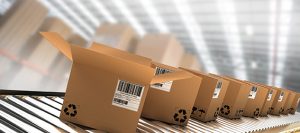
“We must continue to work to ensure that the supply chain is increasingly efficient, intercepting additional hundreds of thousands of tons that are currently still destined for landfill and at the same time improving the quality of the deliveries in those basins, especially with reference to the southern part of the country and some large cities, where qualitative yields are below potential. To achieve these objectives we must make the most of the PNRR resources directing them towards the reduction and enhancement of industrial processing waste (recovering up to 90% of cellulosic fiber), the strengthening of treatment and recycling plants, the digitalization of processes, management of secondary materials, the transition from rubber to iron of a part of logistics of paper waste and the creation of new recyclable cellulosic bio-based materials”.







